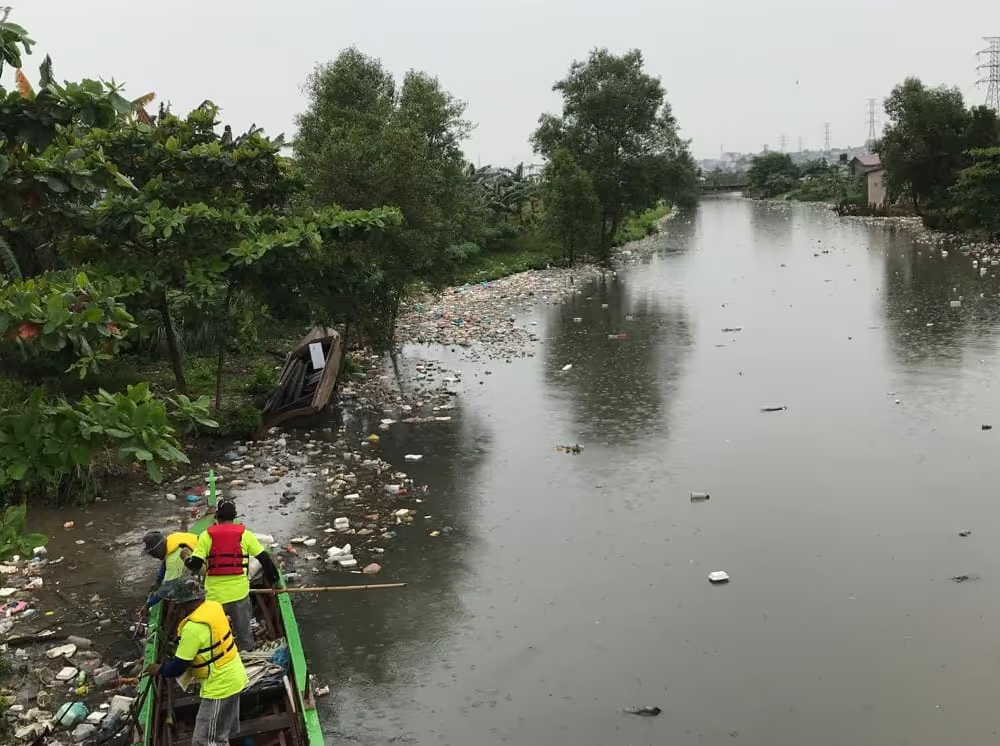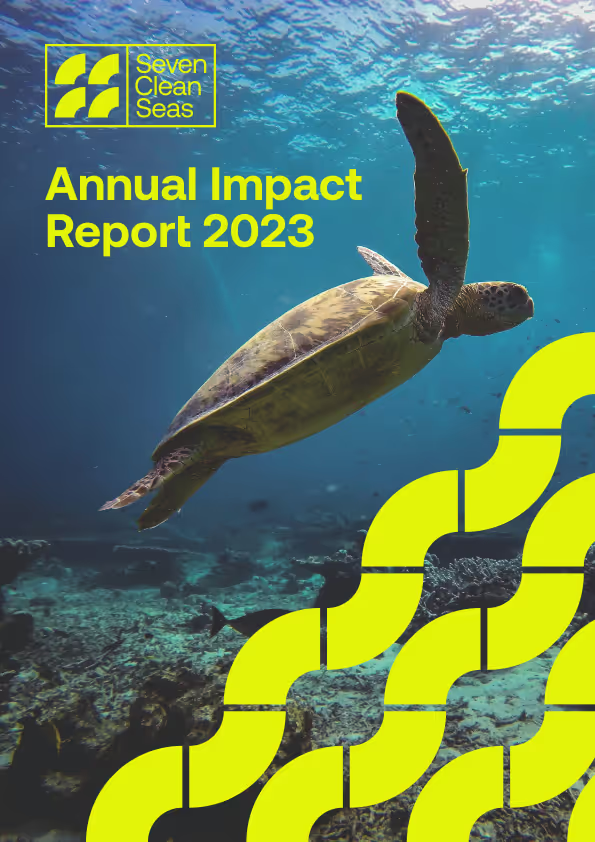As you have probably seen before, the problem with plastic is HUGEEE! Not only are we producing and disposing of plastic at unprecedented rates, but our current waste management infrastructure (in particular in less developed areas) cannot deal with that influx of plastic. To make the matter worse, developed countries often ship their plastic waste to least-developed countries, which only aggravates the problem. We like to call this waste inequality- that is the only way to explain how over 2 billion people worldwide don't have access to basic waste management.
So how do we solve this? By mobilising corporate capital to invest in waste management in areas where it's most needed, cleaning up the environment and working with local communities to prevent more plastic from reaching the ocean
The plastic problem
Plastics and their widespread applications have brought considerable benefits to the world economy and people's lives. They are cheap, lightweight, flexible and hygienic materials that have allowed us to produce, transport and distribute products more effectively, extend products' shell life, and more. However, the widespread use of plastics, in combination with their improper disposal, has created a massive environmental problem on a global scale.

Plastic production has increased drastically over the last 60 years, with 380 million tons produced in 2018 alone (Ellen MacArthur Foundation, 2021; Breaking the Plastic Wave), and it is expected to double in the next 20 years as the demand for plastic intensifies (Auta et al., 2017; Giacomo Avio et al., 2016). However, only 9% of the plastic disposed of, is recycled back into the economy, while the rest is disposed on landfills, incineration or the environment. In particular, plastic pollution affects the marine environment, with 11 million tonnes of plastic entering the ocean yearly (about 32% of plastic disposed of leaks into the environment). This figure is expected to grow to 29 million tonnes by 2040 (CITE). Furthermore, due to plastic's chemical and physical properties, it persists in the environment and accumulates, causing detrimental effects on ecosystems, biodiversity and human health (Barnes et al., 2009).
Plastic offsetting as a solution to the plastic problem
Using plastic offsets is an effective way to address plastic pollution and mobilise corporate capital to fund the removal of plastics from the environment. Plastic offsets simulate the carbon market by generating 'plastic offset credits' to remove plastic pollution from the environment in the same way that carbon offsets remove CO2 from the atmosphere.
The plastics credit market proposes a voluntary coordinated strategy to mobilise capital from the private sector to physically remove plastic from the marine ecosystem and improve waste management in areas most affected by the plastic pollution crisis. It has the potential to drive investment toward more circular economies and holds plastic polluters accountable for the environmental cost of their products, services and operations (WWF Position Paper, 2021). This includes biodiversity protection, pollution prevention, public health improvement and job creation. Players in the plastic industry participate voluntarily in programs for plastic reduction because they have either established their reduction targets or want to reduce or eliminate their plastic impact. In addition, companies purchase offsets for strategic purposes such as reducing their plastic footprint, branding themselves as sustainable, or fulfilling corporate social responsibility (CSR) obligations. The voluntary market has developed considerably in the past two years by introducing common standards that could improve credibility and transparency, such as Verra and Ocean Bound Plastic (OBP) Plastic Collection standards. These standards provide best practices for developing a robust plastic waste reduction and offsetting strategy that will ensure overall plastic reductions and offsetting that is good for the environment and the people.
What exactly are plastic offsets, and how do these generate credits?
Plastic offsets are generated from projects that physically remove plastic from the environment, particularly the marine environment or from recycling materials that would be otherwise disposed of. These projects can take various forms, including beach, river clean-ups, and recovering and recycling technology.

A plastic offset represents an equivalent amount of plastic recovered from the environment. The offsets generate plastic credits, a transferable unit (certificate) representing a specific quantity (usually 1,000 kg) of plastic collected and possibly recycled from the environment. So for Seven Clean Seas, we have generated over 900 plastic credits! However, it is essential to note that plastic offsets are only as good as the projects that generate them. Projects need to align with the industry's best practices, and there is a need for solid requirements to ensure that collected plastic is correctly managed and sent to a beneficial end destination and that it will not leak back into the environment. In addition, offsetting projects need to safeguard the environment and the people involved in the plastic collection process.
Seven Clean Seas works with Verra and OBP to generate plastic offsetting credits that companies can purchase to offset the plastic produced, used and disposed of in their products, operations or facilities. By adhering to such standards, you can expect the highest quality of plastic credits. In addition, we are also focused on the social impact of the plastic collection projects and ensure that all of the people we employ are paid fair wages and fair working conditions. But purchasing plastic credits allows us to build these awesome plastic collection projects. For example, we are now building household collection projects to prevent plastic from reaching the oceans and collaborate with the local communities to provide education and economic development.















